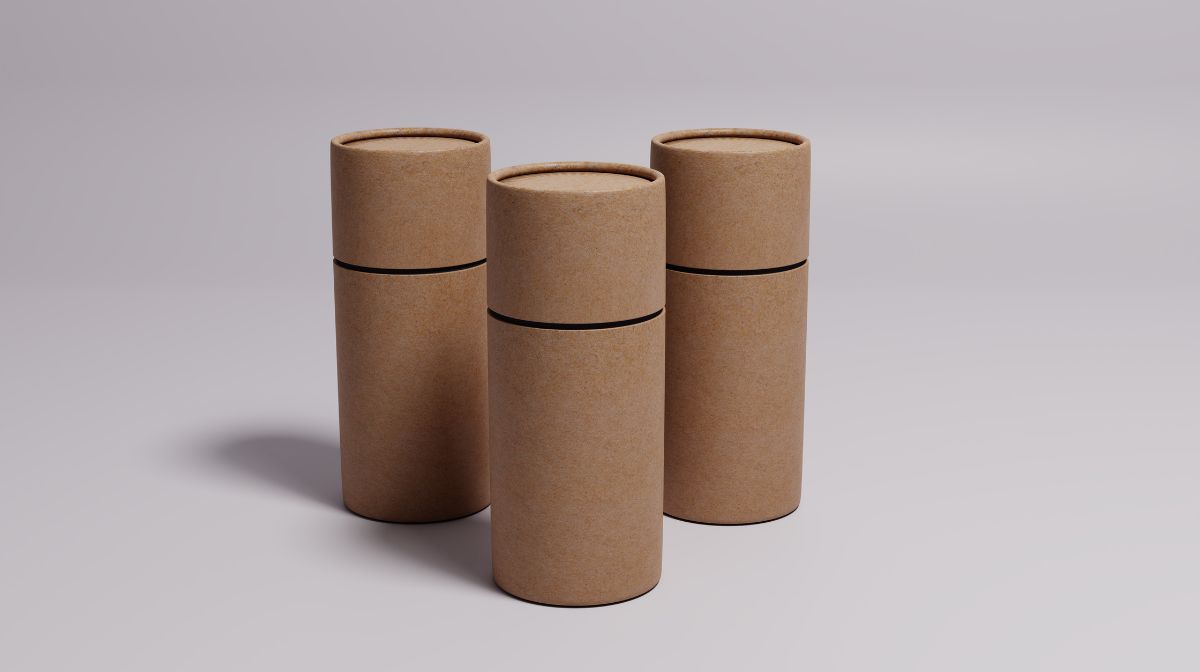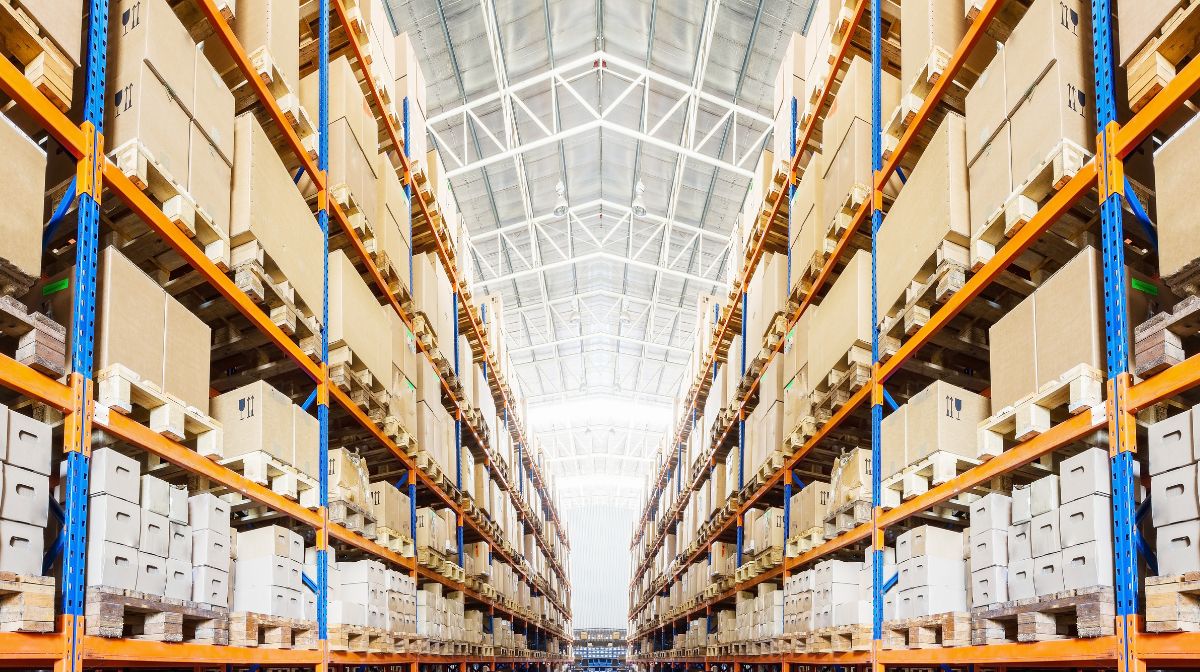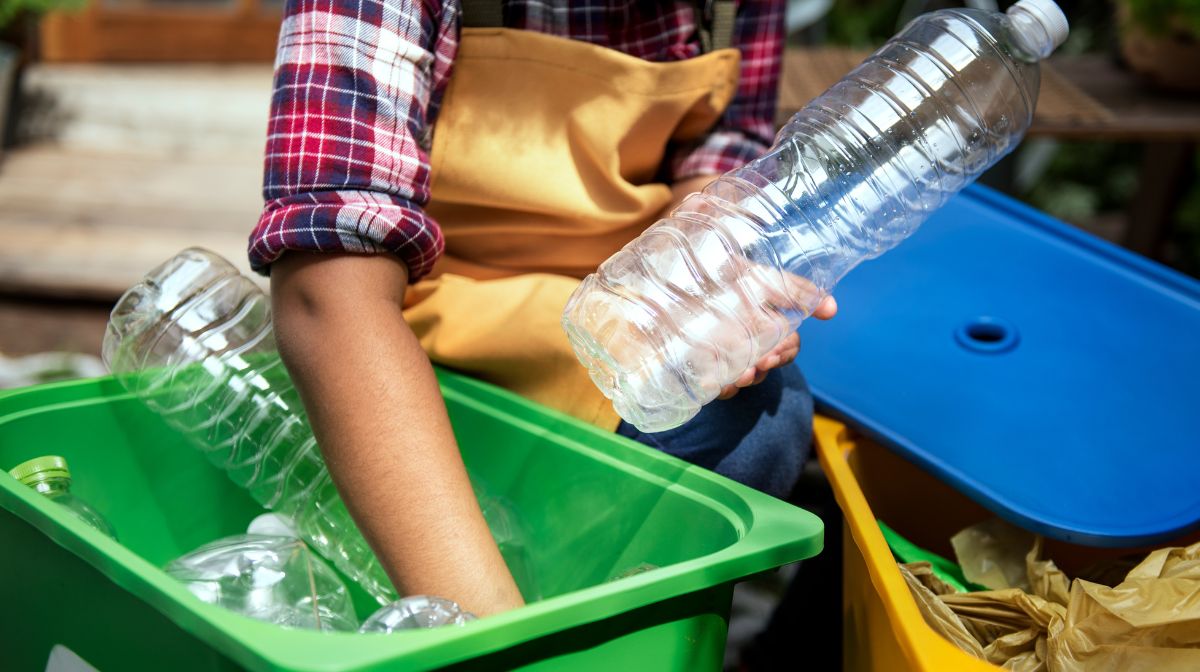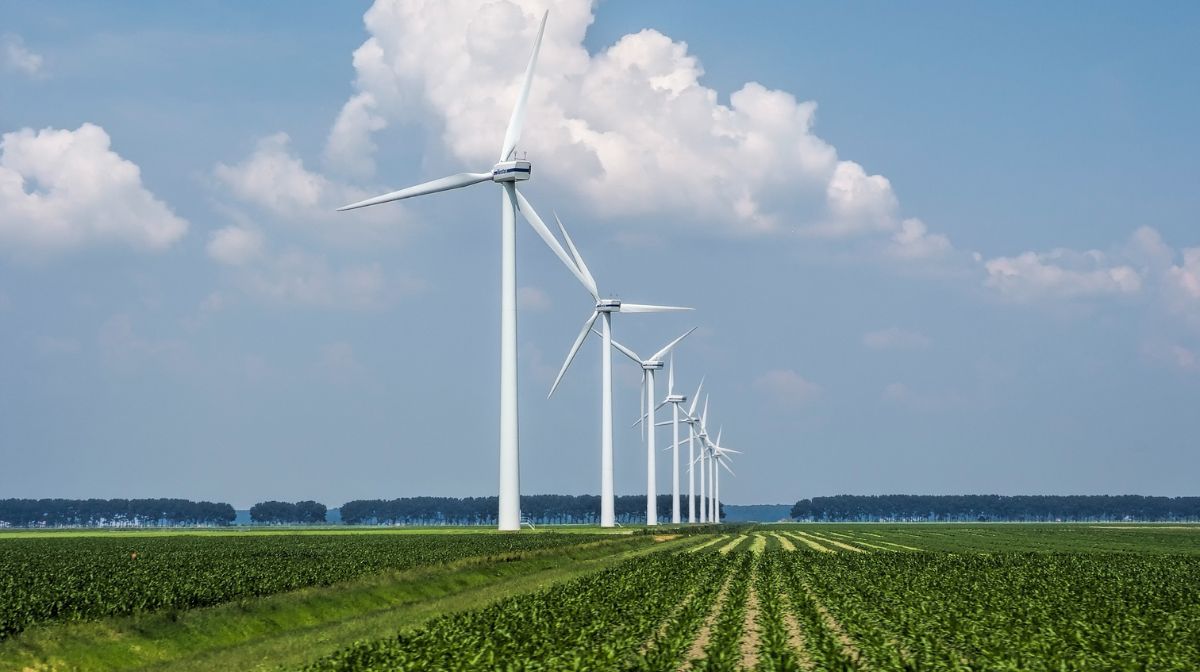Your Guide to Sustainable Packaging
Sustainability in packaging is rising in popularity among many different types of businesses. Also known as eco-packaging or eco-friendly packaging, sustainable packaging reduces the amount of waste that comes from the packaging process and helps businesses create more eco-friendly designs for packaging products.
This guide aims to provide you with a clear understanding of sustainable packaging. We’ll explain the concept of sustainable packaging and delve into the details of the shift toward sustainability in packaging. By the end of this guide, you should have a comprehensive understanding of sustainable packaging, so that you can make informed decisions for your business.

What is Sustainable Packaging?
The goal of sustainable packaging is to utilize renewable resources and reduce the environmental impact of acquiring packaging materials, without compromising the protection of the product. The Sustainable Packaging Coalition (SPC) is a membership-based collective that offers resources to help your company take action toward sustainable packaging solutions.
By using sustainable packaging, companies can minimize their impact on the environment by using less single-use plastics and non-recyclable materials. This means choosing sustainable materials and eco-conscious designs that help reduce waste during storage, shipping, and display. Sustainable packaging is becoming more and more popular as consumers and businesses alike recognize the need to protect our environment.
Why is Sustainability in Packaging Important?
The uncomfortable truth is that there is a large amount of plastic and non-biodegradable materials polluting the environment. A large portion of this waste and pollution comes from poor packaging practices that damage the planet’s health and create serious ecological issues. As consumers become more environmentally aware, they are putting more pressure on businesses to address their packaging processes and find sustainable solutions that benefit the environment.
According to data from the 2022 Sustainable Packaging Consumer Report which surveyed 1,113 consumers in the United States, 86% were more likely to purchase from a brand or retailer if the packaging was considered sustainable.
The issue of sustainability should be important to your business because you play a role in the environmental practices of your community. Gartner reports that 51% of supply chain professionals anticipate an increase in the circular economy’s popularity in the next two years, as a result of the pandemic, consumer expectations, and a need for greater supply chain resiliency. Making the change to start using eco-friendly materials can help you become part of the shift toward a more sustainable future.
Benefits of Sustainable Packaging
Incorporating sustainable packaging into your business can yield significant benefits, both to the environment and to your company. The advantages of adopting eco-friendly practices extend beyond environmental responsibility and include economic advantages, such as reduced costs, increased brand value, and improved customer satisfaction. In the following section, we will look at some of the main reasons why sustainable packaging is beneficial for companies, as well as explore how these practices can impact the bottom line.
Environmental Benefits
Using sustainable packaging materials can significantly reduce a business’s carbon footprint by minimizing the use of non-recyclable and single-use materials that negatively impact the environment. This approach not only reduces environmental damage but also conserves non-renewable resources and minimizes greenhouse gas emissions.
Economic Benefits
Adopting sustainable packaging practices can offer your business several financial benefits in addition to being environmentally responsible. By reducing the amount of materials used in product packaging and implementing efficient packaging processes, businesses can lower their overall packaging costs, optimize storage space, and reduce shipping and freight costs. These practices can also improve overall logistics efficiency, leading to further cost savings.
Social Benefits
A majority of consumers favor brands that demonstrate an awareness of social and environmental responsibility. By implementing sustainability into your packaging and business model, you can have an advantage over your competitors that aren’t prioritizing eco-friendly practices. When you prioritize sustainability in your business, consumers take note and it strengthens your brand’s reputation.
Business Advantages
Prioritizing sustainability is a strategic business decision. Embracing sustainable packaging practices not only promotes environmental stewardship but also offers several tangible benefits for your business. For example, partnering with sustainable businesses can improve the reputation of both companies and enhance their competitive advantage in the industry. By demonstrating a commitment to sustainability, businesses can attract and retain environmentally-conscious customers. These customers can become loyal advocates for your brand, driving sales and revenue growth. Prioritizing sustainability in packaging is a smart and responsible business decision that can yield both reputational and financial benefits.
Common Types of Sustainable Packaging
The materials used in sustainable packaging are essential for the success of an eco-friendly approach to packaging. There are several things that you’ll need to consider and several different types of materials that are classified as eco-friendly. We’ll explore some different options so you can decide which packaging material works best for your business needs.

Biodegradable Packaging
Biodegradable packaging materials will naturally disintegrate and decompose. Unlike virgin plastic and recycled plastic, biodegradable materials are specifically designed to decompose quickly and have a shorter shelf life than petroleum-based items. It is important to note, that not all biodegradable packaging is compostable, but all compostable packaging is considered biodegradable.
Compostable Packaging
Compostable packaging is quickly becoming a key element of sustainability efforts around the world. Made from natural materials like paper, cotton, hemp, and other fibers and compostable plastics derived from renewable materials like corn, potato, and tapioca starches to name a few. Compostable packaging biodegrades in a specific amount of time, in particular conditions, leaving fewer chemical particles behind that can harm the environment. It’s ideally used in packaging that does not need to last long, such as single-use packaging. When compostable packaging is discarded and composted, it can help to enrich the soil, improve environmental conditions, and even promote plant growth depending on the material. However, it is important to note, most compostable packaging must be composted in industrial composting facilities.
Recyclable Packaging
Recycled packaging is a great way to make a positive impact, as it is crafted from previously recycled materials. It reduces the energy and resources required to create packaging from virgin materials, as well as the amount of waste that ends up in landfills. Recycled packaging can be reused multiple times, which helps conserve materials and reduce the amount of waste generated.
Reusable Packaging
Reusable packaging is an ideal solution for businesses that want to reduce their carbon footprint and do their part for the environment. By utilizing reusable packaging, such as glass bottles or pallets and bins for shipping, businesses can reduce the amount of packaging they use over time.

What Materials Are Considered Sustainable?
Now that you know the common types of sustainable packaging, let’s look more specifically at the materials used in each type of packaging.
Compostable Materials
Compostable plant-based materials offer a sustainable and eco-friendly alternative to traditional packaging solutions. Compostable plastics are a sustainable alternative to traditional petroleum-based plastics. These materials are derived from natural sources such as starch, proteins, and cellulose. These materials are biodegradable, breaking down quickly and assimilating back into the environment when composted in the proper conditions typically only achievable in an industrial composting facility.
Recycled Materials
Any type of cardboard, plastic, or paper could be considered recycled material based on whether or not it meets the standards set in different countries and areas for recycling. When a material is recycled, it then goes to a plant where it is remade and sent back out for packaging again. This cycle helps to reduce the need for newly-created materials which reduces the need to use non-renewable resources.
Bioplastics and Biodegradable Plastics
Bioplastics consist of using renewable sources such as sugarcane, wheat, and potatoes. The production of bioplastics uses fewer resources than traditional plastics, reducing the environmental impact caused by fossil fuel extraction. There are different types of bioplastics, where some are biodegradable while others might not. Biodegradable plastics will break down quickly but do not offer the same nutrients that resu

Innovative Sustainable Materials
Innovation in sustainable packaging materials has become an important focus for many companies looking to reduce their environmental impact. Companies are now exploring the use of renewable and biodegradable materials such as seaweeds, water-soluble polymers, paper, and cardboard. These materials can be used to create packages that have a lower carbon footprint than traditional plastic packaging while still providing excellent protection for products.
Seaweed has the potential to be a sustainable raw material source that is easily recyclable and naturally biodegradable. Additionally, biodegradable water-soluble polymers (WSPs) offer an innovative solution as they can completely break down without leaving behind any harmful residues or microplastics compared to other WSPs that don’t fully break down. With new sustainable alternatives emerging on the market, businesses have the opportunity to make meaningful progress towards reducing their environmental impact with creative solutions that don’t sacrifice quality or performance.
What Industries Benefit from Eco-Friendly Packaging?
All industries can benefit from eco-friendly packaging and sustainable practices. However, the businesses that are currently seeing the most benefits are direct-to-consumer businesses. If you sell products to consumers rather than to other businesses, you have more control over the final message you craft to your buyers. You can appeal to the increasing desire of consumers to have sustainable packaging in their products and build your brand around sustainability and reducing your environmental impact.
Sustainability’s Impact on the Supply Chain
The sustainability of the supply chain can have a profoundly positive impact on your business and the environment. Companies can make their supply chains more efficient, cost-effective, and sustainable by taking steps to increase transparency, set clear objectives, and prioritize waste management and environmentally friendly packaging. One way that transparency can be achieved is by ensuring that suppliers and consumers alike understand the objectives of sustainability initiatives. Sustainable practices help improve productivity and reduce waste, which helps the supply chain run smoother and deliver better results through every step of the production process. A sustainable packaging strategy can also optimize your costs and save money by reducing storage space, making shipping more compact, and reducing the environmental impact of the transportation of products through the supply chain.

Challenges Companies Face Around Sustainable Packaging Adoption
While there are many benefits to sustainable packaging and going eco-friendly with your packaging processes, there are still sustainable packaging challenges that you could face when it comes to implementing sustainability initiatives into your business practices.
Manufacturing Costs
While sustainable packaging is better for the environment, can potentially save costs in the future, and helps improve your relationship with consumers, it can also be expensive to get started. Sustainable materials tend to cost more than non-sustainable plastics and packing materials, which can increase up-front manufacturing costs. While savings and increases in sales are on the horizon, it can still be challenging to get over the initial investments in a sustainable packaging solution.
Limited Availability of Sustainable Materials
Another common challenge that businesses face with sustainable packaging is the limited amount of materials. Sustainable packaging can take more time to create, which can mean that the availability of materials is scarce. That puts pressure on businesses and can even delay shipping or product availability if sustainability is a promise made to consumers.
Inadequate Infrastructure for Recycling
Recycling is an important step towards sustainability and environmental protection, yet the current infrastructure often fails to meet the needs of both businesses and consumers. Without adequate support from higher levels of government, it can be incredibly difficult to make meaningful progress in this area. This leaves individuals feeling powerless, unable to realize their desired outcomes.

Regulatory Barriers
When it comes to implementing sustainable packaging programs, businesses may be confronted with a number of obstacles based on governmental or regulatory regulations. These regulations can often dictate the type of materials and packaging methods that need to be used, which can limit the use of eco-friendly materials and techniques. This lack of flexibility in packaging requirements can impede progress toward sustainability, and businesses must be aware of any such restrictions before beginning a project.
Resistance to Change
Businesses must often overcome resistance to change in order to follow through with sustainability efforts. This can be particularly tricky as stakeholders and decision-makers may not see the immediate value in transitioning to a more sustainable model. Even those that are open to such changes may overlook or ignore the long-term environmental benefits of doing so. To reach success, businesses must develop strategies to win over such skeptics and create a plan that works for their unique situation.
Standards and Regulations in Sustainable Packaging
It’s important to keep standards, regulations, and requirements in mind when considering sustainable packaging. Depending on your industry, your area of operation, the type of material or sustainable packaging you want to use, and the needs of your customers, you may have certain rules and standards you need to stick to in order to remain compliant. Take the time to look into the different rules in place for your industry and consult with your regulatory teams to ensure that you are meeting all compliance standards before beginning your sustainable packaging program.

Trends in Packaging Products Sustainably
As sustainability becomes increasingly important to both businesses and consumers, we are seeing emerging trends in packaging that aim to reduce waste and promote sustainable practices. One key trend is the shift away from recycled and reused materials towards biodegradable and compostable alternatives. Another trend is the utilization of wash-off labels instead of plastic stickers, and we’re beginning to see an increase in paper instead of plastic for product protection in the packaging process. For businesses, using lightweight packaging is another great way to reduce shipping costs and emissions from shipping. Another trend we’re seeing is that some companies are also beginning to use refillable packaging for products, an innovative way to reduce waste and promote sustainability at the same time.

Best Practices for Implementing a Sustainable Packaging Solution
Creating and implementing a sustainable packaging program within your business can be a rewarding process, but it requires thorough preparation and planning. To begin, it’s important to identify your business’s sustainability goals, mission, and objectives. Ask yourself: what are you hoping to achieve through this program? Is it to reduce packaging material use, increase the use of recycled materials, or something else? Once you’ve identified your goals, set measurable objectives for each of them. The following guidelines will help you get started.
1. Don’t Go All In at Once
Beginning a sustainable packaging solution takes time. Don’t worry about overhauling your entire process at once, instead take your time. Research packaging options and suppliers, and explore options that offer the most significant cost savings and customer appeal. By slowly implementing changes, you can ensure that you don’t invest too much before identifying what will work best for your business needs.
2. Order Samples
Many sustainable packaging providers will have samples you can order. This will allow you to examine the materials, test them with your own products, and try out different potential solutions before placing a large order or signing up with a supplier. When making important decisions, it is essential to be aware of the potential risks and rewards as well as taking a careful, methodical approach.
3. Adjust Pricing
Investing in a better packaging solution can often lead to an increase in the cost of products for consumers. However, consumers are increasingly aware of the need to support sustainable practices and are often willing to pay a bit extra if it means helping protect the planet. Making the switch to sustainable packaging solutions can mean a shift in consumer mindset, so it may be helpful to explain why you are making the change.
4. Start with Small Volumes
Once you’ve determined the most suitable sustainable packaging solution for your business needs, it is wise to order a small quantity initially. This allows you to assess how effective the new packaging is for storing, shipping, displaying, and protecting your products. Ordering a smaller volume of packaging provides an opportunity to gain valuable customer feedback to decide whether these changes will positively affect your business. If the overall customer feedback is positive and there are no issues with the new packaging, you can start scaling up your orders accordingly.
5. Message to Customers
Messaging is essential to the success of a sustainability program in a business. Businesses should strive to make their customers aware of the steps they are taking as a company to protect the environment and reduce their carbon footprint. Doing this will not only increase awareness of your company’s commitment to sustainability, but it can also be an effective way to increase sales and strengthen customer loyalty.

Reduce Your Carbon Footprint and Packaging Waste Today
At Paramount Global, we understand how important it is to collectively reduce our impact on the environment. That’s why we offer a comprehensive range of sustainable products and packaging solutions that can help you take control of your sustainability initiatives and deliver sustainable solutions to your customers. Our team of experts are dedicated to helping you find the packaging solution that best meets your needs, while also reducing your environmental footprint.
We are committed to helping our partners stay ahead of the curve when it comes to sustainability and protecting our planet. We believe that by embracing sustainable packaging solutions, businesses can do their part to help reduce waste, conserve resources and ultimately make a difference in the fight against climate change. Contact us today to learn more about how we can be a partner to you in your journey to packaging sustainability.
Hayley is a marketing professional and copywriter with a background in crafting content for a diverse range of industries. She has been writing about packaging and supply chain logistics for Paramount Global since 2022. She specializes in explaining complex topics in a clear and engaging way and is an advocate for sustainability in packaging and supply chain management.
Read More
For over forty years, Paramount has been delivering perfectly integrated packaging and supply chain solutions.
